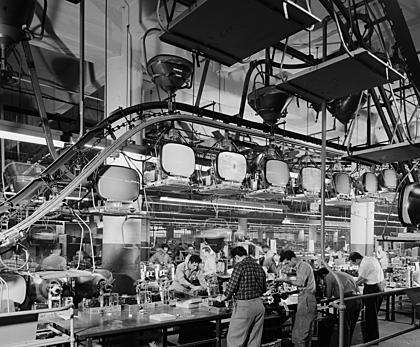
CBS Columbia, Long Island City, 1954
No achitect is unfamiliar with Ezra Stoller, the pioneering photographer whose clinical eye defined modernism and shaped our vision of the built world for much of the twentieth century. For decades, no work of architecture, at least on the East Coast, was complete until it had been reconsituted in two-dimensions through his lens — "Stollerized." These translations had a tendency to be more heroic, more pristine, and more alluring than the buildings they represented in real life. That was his genius.
That's the Ezra Stoller we all know. The Ezra Stoller of the TWA Terminal and the Seagram Building, of Paul Rudoph and Richard Meier. (I was lucky to know Ezra personally, as the editor of a series of small books of his photographs on modern landmarks.) A new monograph on Stoller from Yale showcases that familiar work, but also an aspect of Stoller's output that is not: his photographs of industry. Not only did Stoller take photographs of American factories as architecture, he shot those spaces in action, with workers busy assembling the products that defined American life at midcentury: aluminum, computers, paper, penicillin, televisions, records, silk, typewriters — everything up to and including Heinz ketchup.
As noted by Nina Rappaport, who deserves much credit for resuscitating this work, many of these photographs were undertaken either for Fortune magazine or in collaboration with the designer Will Burtin. In them, the products and workers of corporate America are treated with the same heroic grandeur and sharp eye for detail Stoller typically graced on buildings. Though more innocent as to the nature of consumer capitalism, they have the epic scale and density of the photography of Andreas Gursky. Some of his detail images have a distinctly Bauhaus feel. Together, they represent an extraordinary documentation of the romantic corporate America of the imagination — white, prosperous, productive, clean, and efficient — an America that no longer, or at least rarely, exists, if it ever really did in the first place.
A few examples follow, but the book is highly recommended.
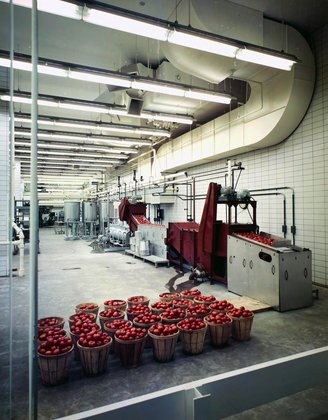
Heinz Factory, Pittsburgh, 1958
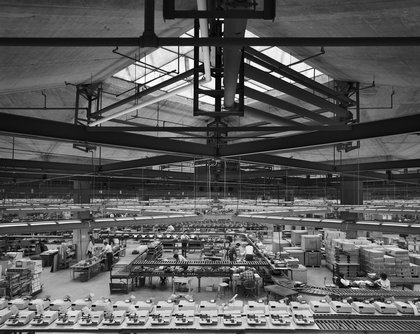
Olivetti-Underwood, Harrisburg, PA (Louis Kahn)
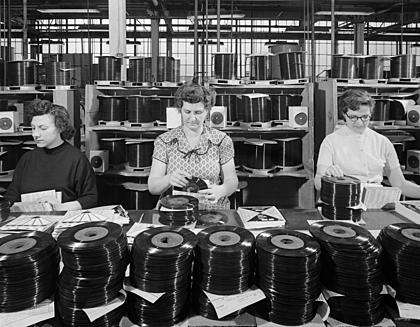
CBS Columbia, Long Island City, 1953
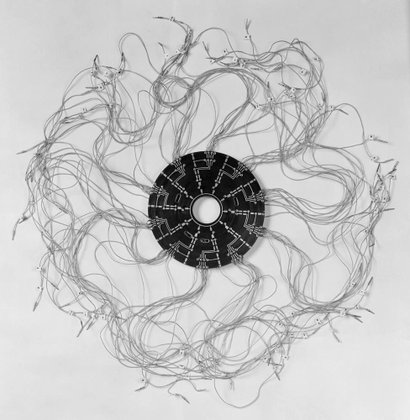
IBM, 1954
